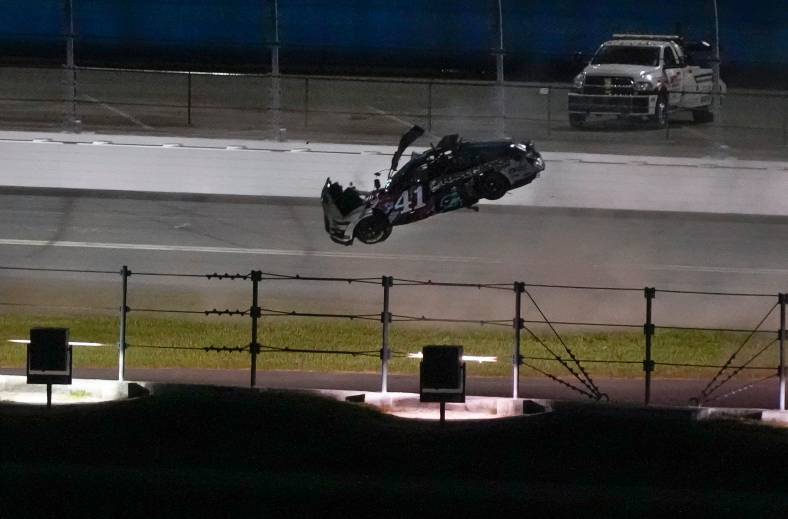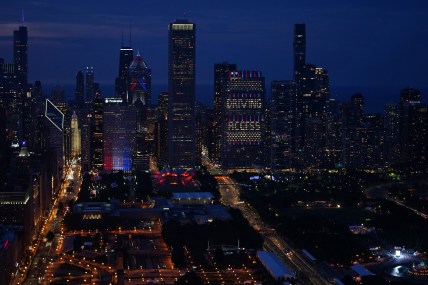
Come August, the area where Ryan Preece in the Stewart-Haas Racing No. 41 violently barrel rolled down the backstretch at Daytona International Speedway in the 2023 Coke Zero Sugar 400 will look drastically different.
As per its standard operating procedures, NASCAR reconstructed the incident and determined that the road course bus stop chicane rumble strip and backstretch grass contributed to the lift-off and rollover respectively.
Preece walked away from the incident, sporting ugly bruises under his eyes for several months from the G-Forces, but NASCAR is removing both of those elements from the track.
The graphic below shows the areas that have already been repaved and those that will be repaved after the Daytona 500 next month.

NASCAR’s senior vice president of competition Elton Sawyer and managing director of safety engineering John Patalak explained how they reached that decision and what went into the timing this week during an annual media briefing at its R&D department.
“With the incident we had with the 41 car at Daytona II, we have, you see in yellow there, re-asphalted that area,” Sawyer said. “Post Daytona 500, we will asphalt the green area.
“The reason is working within our off-season and with our friends at IMSA (for the Rolex 24). It will be done post-Daytona 500. As well as the rumble strips that are there on the bus stop today, they will be removed, as will the concrete pads, which will give us the opportunity to, similar to what we do at Circuit of the Americas, take different rumble strips and interchange them.”
“If we want to go flat in that area, we can do that. It gives us some options.”
“In general, we’ve had conversations over time about grassy areas,” Sawyer said. “Talladega on the backstretch was an area that we’ve looked at. John Patalak and his team worked extensively on that.”
Sawyer gave the floor to Patalak to expound on those decisions.
“Predominantly, stuff with the rumble strips, we were able to see that in the car data, when we did the accident reconstruction,” Patalak said. “A lot of things stacked up to our disadvantage but an opportunity to make it better, do a lot of research about grass and the aerodynamics to a car, and the lift off properties.
“That also means the negative effects of grass on the car. So, when you stack all those things together, from a rollover standpoint, the grass tends to grab the car once it’s in the air. It increases the roll rate of the car instead of increasing friction compared to asphalt. We put all those together to reach this decision.”
More from the R&D briefing
NASCAR approves LED screens for pit boxes
NASCAR building remote race control in North Carolina
NASCAR unveils new Cup qualifying format
EV car to debut at The Clash
NASCAR’s latest short track package attempt
Matt Weaver is a Motorsports Insider for Sportsnaut. Follow him on Twitter.
